Eyes on the Street: Battery’s Unprotected “Protected” Bike Lane
3:41 PM PST on December 20, 2022
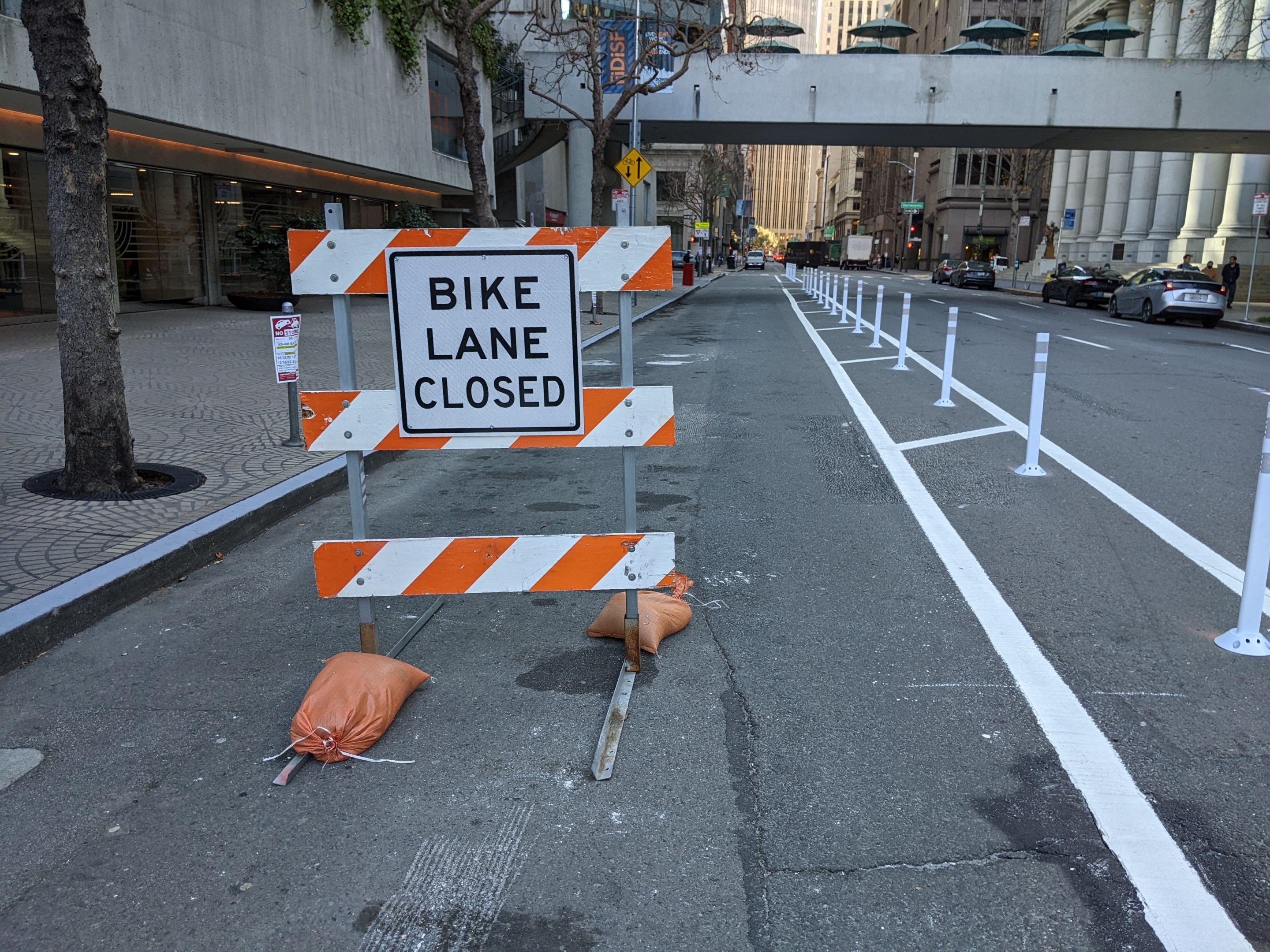
The bike lane is closed so that SFMTA can add bendy straws. Photos: Streetsblog/Rudick
Note: GJEL Accident Attorneys regularly sponsors coverage on Streetsblog San Francisco and Streetsblog California. Unless noted in the story, GJEL Accident Attorneys is not consulted for the content or editorial direction of the sponsored content.
There's perhaps no greater contrast in infrastructure in San Francisco than north and south of Market Street in downtown. To the south is District 6 where, thanks to the hard work of former Supervisors Matt Haney and Jane Kim before him, there is now flawed-but-nevertheless-much-improved, parking-protected, bike infrastructure. And District 3, well, let's just say it's pretty much the same sh*t show it's always been, featuring sharrows, striped door-zone bike lanes (sometimes on the wrong side of the street) and total priority for motorists.
However, work is now underway on what the SFMTA is billing as the first major bike project in the district. More from the agency's web page:
This project is a major step forward for cycling in the city. Apart from the Embarcadero, there is no other protected bike lane near the Financial District — even though two out of the 10 most active bike share stations in the city are in the downtown area. With so many people returning to downtown offices after working from home due to the pandemic, this new route will offer a safer option for those looking for a more active commute.
And here's what it will look like when it's finished:
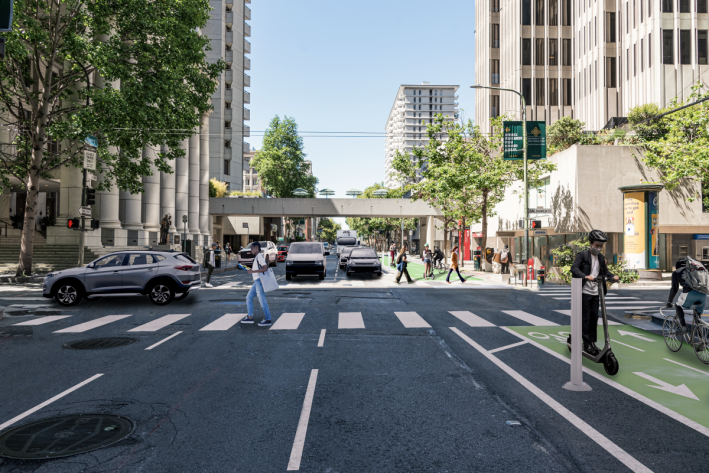
Streetsblog received a nasty email from the Supervisor's office back in 2019 when it published Safety-Washing on Sansome and Battery, a take-down of an early phase of this supposed "quick build" safety project. And while what's going in now is a minor improvement, with more delineation for cyclists, it's scandalous just how far this two-lane, unprotected bike lane still departs from international best practices--and physics.
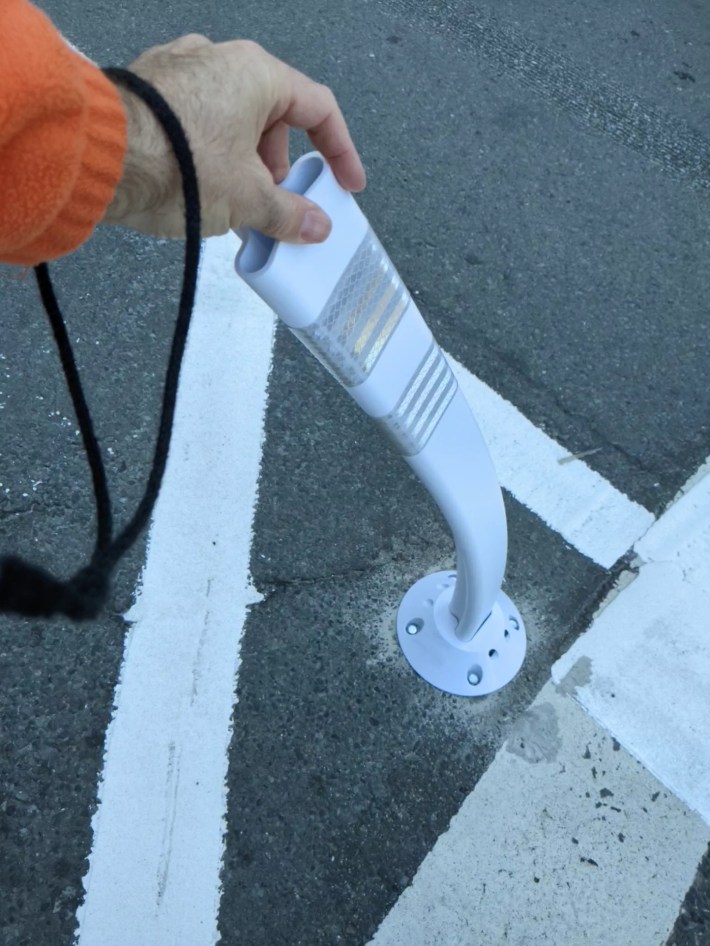
Two-way bike lanes are pretty fraught; but they make sense along waterfronts and rail yards and in other situations where there are no intersections. Otherwise, they invite conflicts with turning motorists. If a city is going to do a two-way on a street with big intersections then they must, at the very least, have concrete protection. Signals and signs aren't enough. The situation SFMTA is building for here almost guarantees a simple mistake by a motorist will result in serious injuries.

Meanwhile, it's not as if the means and materials to properly protect the bike lanes aren't already there, as seen with these planters between Jackson and Pacific. Just put these between motorists and cyclists to provide some real protection:
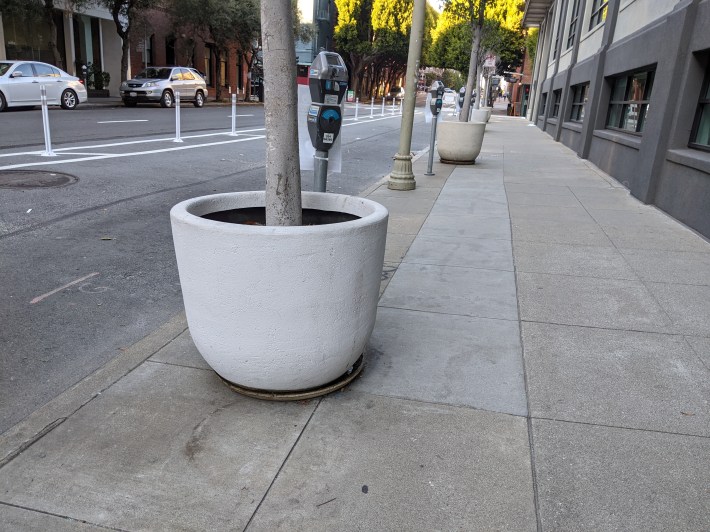
Is it too politically challenging to put in concrete protection? Even on the one block where they could provide protection without taking anything from the street, they fail to do so. Between Washington and Jackson there's an enormous building setback and a huge sidewalk. Would it be Armageddon to paint the bike lane onto part of this space, where cyclists would be protected, in reality, for one damn block? That's a place where it makes sense to use plastic posts--to segregate pedestrians walking from pedestrians rolling on two wheels (aka: cyclists).
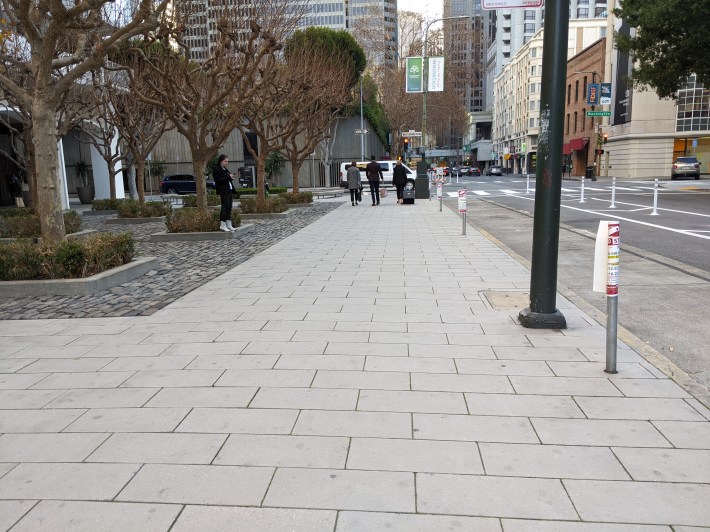
This is an easy and common "quick build" treatment found in Europe that somehow the Bay Area just refuses to consider. The treatment pictured below from Dusseldorf isn't great, but it's way safer than what SFMTA is building:
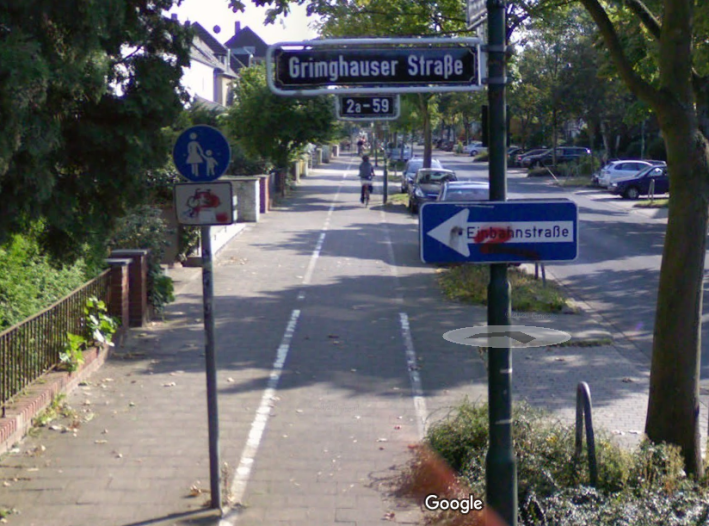
In the German example above, people are at least protected from the real danger: cars and trucks.
Meanwhile, SFMTA continues to build whatever this is:
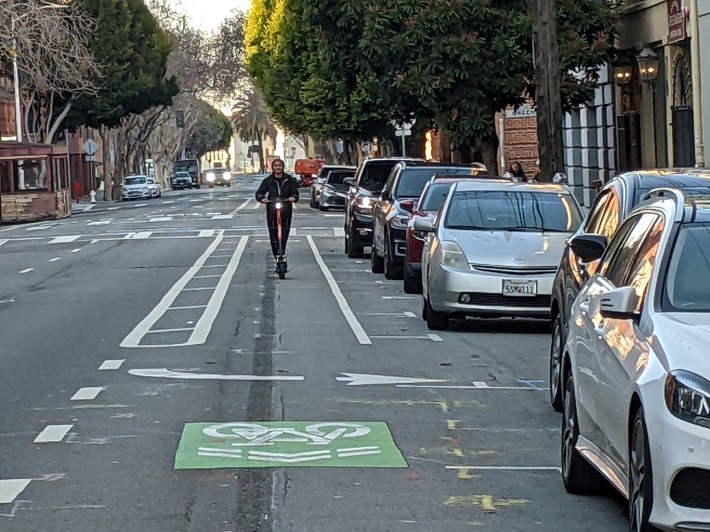
SFMTA and the Supervisor's office need to write this 1,000 times on the blackboard: cyclists (and scooterists) are pedestrians on wheels. They are not cars. And when delicate human bodies are mixed in with two-to-ten ton vehicles driven at high speeds, people end up getting maimed and killed, no matter how bright their clothes or whether or not they wear a Styrofoam bowl on their head.
Adding little plastic bendy straws doesn't change that reality.
Stay in touch
Sign up for our free newsletter
More from Streetsblog San Francisco
Weekend Roundup: Bancroft Lane Gets Concrete, Party in Downtown S.F.
...and the Bay Bridge to get its lights back
Richmond-San Rafael Bridge Bike Lane Will Need Support
There's no evidence the bike lane contributes to congestion on the bridge
Update on Oakland DOT’s Lakeshore Protected Bike Lane Project
Public seems fairly positive and accepting towards the coming project. Let's hope it stays that way




